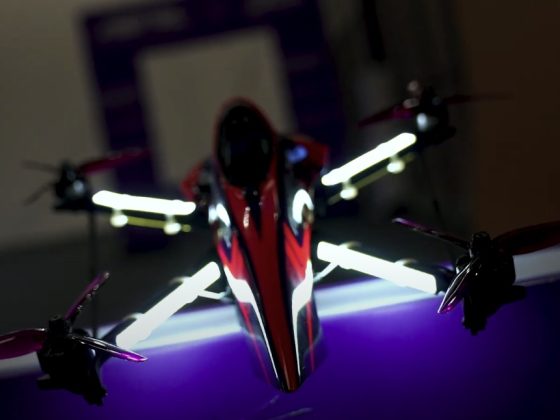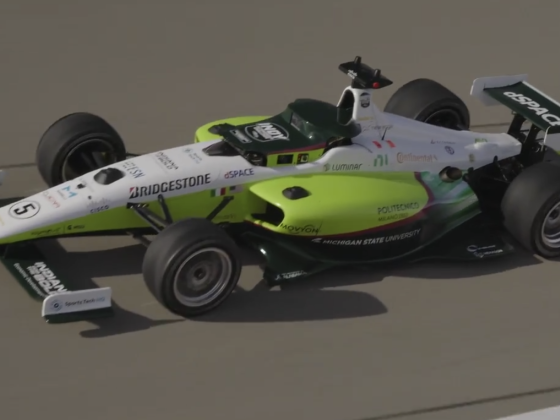We’ve always enjoyed drone racing for its fast speeds and futuristic feel — it’s a sport that looks like something from a sci-fi movie. But while the big leagues often get the spotlight, there’s another major force in the sport: the Drone Racing World Cup, run by the World Air Sports Federation (FAI).
This is not just one race. It’s a series of events around the world where top pilots from many countries compete for medals, rankings, and pride. From tight, technical tracks in Europe to open-air stadiums in Asia, the World Cup is where skill, practice, and quick thinking all come together.
And the tech is evolving just as fast as the sport itself. Every season, drones get lighter, quicker, and smarter — with AI-assisted flight, real-time telemetry, and custom-built racing frames pushing the limits of what’s possible. What started as a pure test of human reflexes is now just as much about engineering brilliance and software precision. Drone racing isn’t standing still — it’s moving at the speed of the technology that powers it.
What Is the Drone Racing World Cup?
Launched in 2016, the Drone Racing World Cup is an open international series where pilots compete in individually sanctioned races — no national teams, just their own skills. Events follow F9U class rules, defined by the FAI’s Drone Sport Commission (CIAM). Pilots need a valid FAI Sporting Licence or Drone Permission to enter. Medals and diplomas are awarded to the top finishers based on their overall ranking.
Each country can host up to two events per year; larger nations across multiple time zones may host up to four.
The 2025 Calendar: Global Tracks to Watch
The 2025 World Cup season features high-energy stops in some of the sport’s most exciting venues:
- Riyadh (Saudi Arabia) — Jan 23–25, 2025
- Tenerife (Spain) — Apr 26–27, 2025
- Aichtal (Germany) — May 30–Jun 1, 2025
- Seoul (South Korea) — Jun 14–15, 2025
- Hungaroring (Hungary) — Jun 20–22, 2025
- Södertälje (Sweden) — Jun 28–29, 2025
- Varese (Italy) — Jul 12–13, 2025
- Varna (Bulgaria) — Jul 18–20, 2025
- Belgrade (Serbia) — Jul 26–27, 2025
- Istanbul (Türkiye) — Sep 6–7, 2025
- Seoul (Korea) — Sep 30–Oct 2, 2025
- Zhejiang (China) — Oct 2–5, 2025 (provisional)
Full details and updates are published on the FAI Drone Racing World Cup Calendar.
Can You Bet on the Drone Racing World Cup?
At the moment, betting on the Drone Racing World Cup is rare and highly location-dependent. Unlike the Drone Racing League (DRL), which has partnered with major sportsbooks in the US, the FAI World Cup does not have an official betting sponsor.
- United Kingdom & Europe – Some specialist esports bookmakers has offered odds during World Cup finals or marquee events. Availability is sporadic and tends to peak during the championship stages. We how it will catch on as it will increase the engament with the races and move it way from a niche sports.
- United States – At hte moment no regulated US sportsbooks list FAI Drone Racing World Cup markets. A few have experimented with offering odds during major international drone events in the past, but it’s far from common. Your best bet is to check event-week listings at operators known for niche or emerging sports.
What Makes This Circuit Stand Out
- Global Scale & Diversity – Events span the Middle East, Asia, and Europe, reflecting drone racing’s growing international appeal.
- Accessible Format – Any licensed pilot can enter, making it a true proving ground for grassroots talent.
- Prestige & Pathways – World Cup results feed into qualification for major air sport events like The World Games.
- Flexibility – The annual roster can adapt to include new venues and respond to shifts in the competitive scene.
Reflections Midway Through the World Cup
The Drone Racing World Cup has matured into one of the sport’s most consistent and respected competitions. Pilots speak highly of the balance between competitive integrity and international camaraderie. The standardized FAI rules ensure that the racing is about skill rather than technological advantage, though equipment tuning remains a vital part of the sport.
The 2024 season showed clear performance leaps in lap consistency and mid-race recovery, with pilots able to regain composure after near misses — a skill especially important on the tight European and Asian circuits. Crowd engagement has also grown, with live-streamed events reaching tens of thousands of viewers worldwide.
What to Expect in 2025 and Beyond
Looking ahead, several trends are likely to shape the World Cup’s next chapters:
- Faster Courses, Tighter Layouts – Organizers are experimenting with more technical tracks to reward precision and strategy over raw speed.
- Expansion into New Regions – Expect further Middle East and Asia-Pacific events as the sport looks to tap into new fan bases.
- Rising Youth Talent – More pilots under 20 are making finals, a sign that early training programs and simulator-based practice are paying off.
- Hybrid Broadcasts – Integration of onboard FPV footage, live drone cams, and AR overlays will make streams more immersive.
If the last few seasons are any guide, the World Cup will remain a proving ground where reputations are made, and a bridge between grassroots racing and global professional opportunities.








